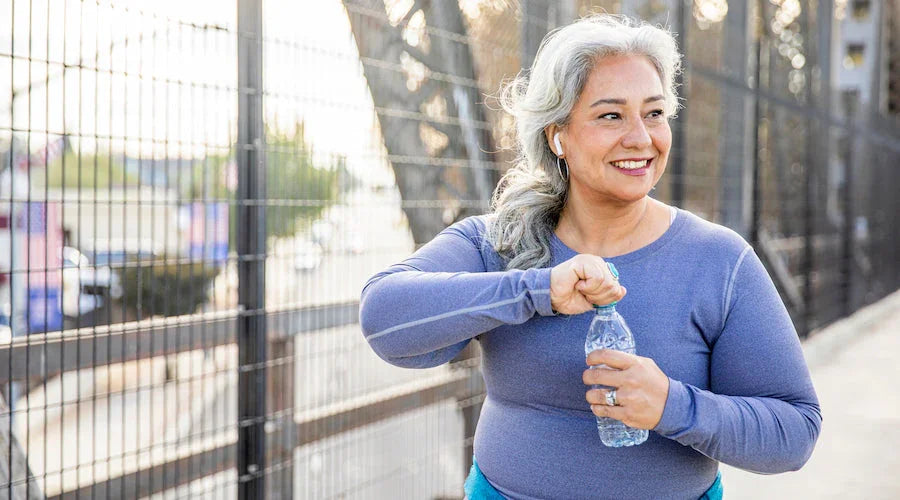LIVING WITH INCONTINENCE
Incontinence exercise
Read moreFREE SHIPPING ON ALL ORDERS!

Paying particular attention to what you eat and drink, exercising and practicing good bathroom habits are key. To make it easy, we’ve developed our top ten tips for managing urinary incontinence in winter.
1. Watch your caffeine intake.
Hot drinks like tea, coffee and even hot chocolate, all contain caffeine which is known to irritate the bladder. Instead, have a herbal tea, or hot water with a combination of fresh mint, ginger or lemon.
2. Keep alcohol to the minimum.
A glass of red wine in winter is lovely, but like caffeine, alcohol can irritate your bladder.
3. Stay hydrated.
When it’s cold, we often forget to drink water. It is true than when it’s cooler, we need less water, but you should still be aiming for around two litres a day. Dehydration causes urine to become more concentrated, which can aggravate the bladder and contribute to constipation.
4. Be mindful of weight gain.
Warm and comforting winter food is often calorie dense, and coupled with less activity, it’s easy to gain a few kilos. However, being overweight places an extra load on your pelvic floor muscle which can weaken it and result in urinary incontinence.
5. Avoid foods that can irritate your bladder.
Tomatoes and tomato-based products (like pastes, chutneys, soups and sauces), chocolate and spicy foods are all known to affect the bladder, so give them a miss over winter. You can read more in this article, Foods and Drink to Avoid.
6. Stay regular.
The straining associated with constipation can weaken and damage the pelvic floor muscle, causing urinary incontinence. Make sure you’re eating well, drinking plenty of water and exercising to keep your bowel regular. You can read more about increasing the fibre in your diet here.
7. Exercise your pelvic floor muscle.
For improved control of urinary incontinence, a strong pelvic floor is essential. TENA has a range of easy-to-follow instructional videos that take you from beginner to intermediate and master. Check them out here.
8. Take extra care if you have a cold.
The sneezing and coughing brought on by a cold can cause leaks – usually the result of a weak pelvic floor. The downward pressure of coughing and sneezing puts additional pressure on to your bladder and this muscle, and if it’s not strong, you may experience urinary incontinence. Make sure you’re doing daily pelvic floor exercises and consider one of TENA’s protective products to see you through.
9. Practice good bladder habits.
When your suffering from urinary incontinence, going to the toilet ‘just in case’ intuitively feels like a good idea, but in fact, you should wait until your bladder is full before emptying it. If going frequently becomes an ingrained habit, it can contribute to incontinence as your ability to hold a full bladder diminishes without practice.
10. Consider a protective product
Even if you are doing all the right things, you still might find yourself caught out – especially if you have a cold. Consider using one of TENA’s purpose made products that are designed to handle the thinner, faster flow of urinary incontinence, keeping you dry and odour-free. Check out the full range and try our TENA Product Finder Tool, and Free Samples to find the product that best suits your needs.
The TENA range includes super small TENA Liners, an extensive range of TENA Pads and TENA Pants that looks and feel just like regular underwear. All are designed to handle the thinner, faster flow of a weak bladder to keep you dry and odour-free.
Check out the TENA Product Finder Tool, and Free Samples to find the product that best suits your needs.
Sources:
Essity Australasia makes no warranties or representations regarding the completeness or accuracy of the information. This information should be used only as a guide and should not be relied upon as a substitute for professional, medical or other health professional advice.